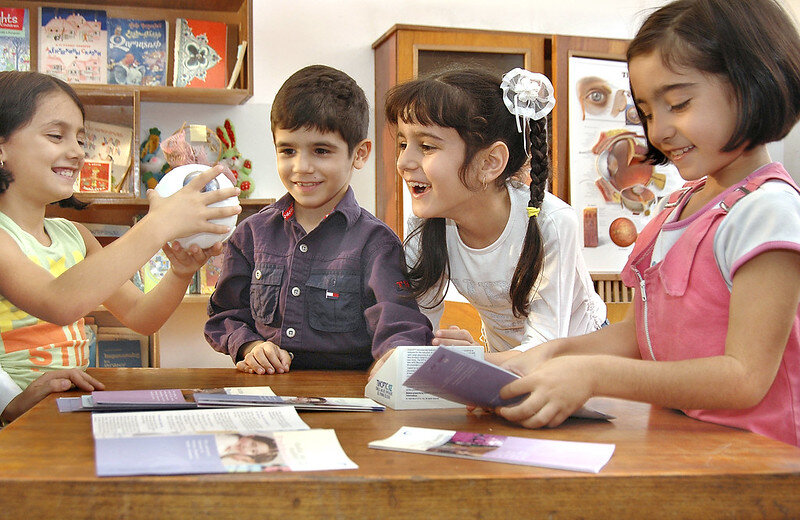Students who feel safe in your classroom are ready to learn
Like millions of teachers across the country, I have spent the last weeks getting my classroom ready for students to return. My desks have been properly arranged for covid safe distancing while still allowing for collaboration and small group instruction. My supplies are placed in their proper color-coded baskets, and my bulletin boards have been freshly assembled. I am ready!
But, after 18 months of pandemic education, is that really all our students need?
Our students are coming back to the classroom with even more trauma than they may have already experienced pre-pandemic. What they really need is a safe, secure place to land. Yes, the organized, fresh classroom is part of creating that safe place; but, there is a lot more we can do to provide a safe, trauma-informed, and trauma-sensitive classroom.
Howard Bath, in his article The Three Pillars of Trauma-Informed Care, writes that there are three universal components to providing support to those impacted by trauma. They are:
1. Safety
2. Connection
3. Managing Emotions
In this three-part series, I will look at each of these pillars of trauma-informed care and offer some practical ways we can meet these trauma needs in the classroom. Let’s start with safety…
Safety
Unfortunately, the defining experience of any child who has experienced complex trauma is that of feeling unsafe. These children develop a pervasive mistrust of the adults with whom they interact, and as Seita and Brendtro (2005) point out, they become “adult wary,” employing a range of strategies that keep adults at bay. -Howard Bath
When was the last time you didn’t feel safe? Do you remember the racing heart feeling? Did you notice you were breathing with quick, shallow breaths? Did you want to fight, flee, or freeze? When we do not feel safe our pre-wired safety brain kicks into gear, ready to keep us alive. Our students who have experienced trauma come to us with an overactive survival brain. They are constantly asking the question, “Am I safe here?” “Can I trust this adult?” As teachers, we need to create a classroom that answers their questions with a definitive yes! It is not as difficult as you may think. In fact, many excellent teachers do these things without even knowing they are trauma-informed practices.
Consistency, reliability, predictability, availability, honesty, and transparency are all attributes that are related to the creation of safe environments for children. -Howard Bath
Below are 4 ways you can create a classroom that provides a sense of safety for all students; but especially those that come to you who have experienced trauma.
A disorganized classroom can cause students to feel anxious and become distracted.
Provide a Calm Space.
Both the tone of your voice and the lighting in the classroom can help to create a space that is calm. Students who come to us having experienced adverse childhood experiences are many times in a state of dysregulation; their stress response is in overdrive. When we use loud, aggressive tones it will almost always escalate a student and lead to a student shutting down or acting out. Speak with calm authority, and you will find your students are much more attentive and responsive. Harsh, overhead, fluorescent lighting can create a feeling of anxiety, bodily stress, or hyperactivity; all things the kids with an overactive stress response are already prone to. Add floor lamps with soft light to your classroom and turn off the overhead lights. You can also cover several of the overhead lights with fluorescent light covers. You can find them here. More on creating calm when we look at managing emotional responses in part 3.
Provide predictable and consistent procedures
Children who have lived in chaos crave predictability. If the home is a place where they do not know what is coming next or what they can count on, a classroom that has consistent procedures will provide a much-needed sense of safety. Post the day’s agenda in the same place every day. Be consistent in your rules and classroom procedures. Take time at the beginning of the year to explain, rehearse, and correct the expected behaviors and procedures. The more the students know what to expect, the safer they feel.
Provide an organized classroom
As a former type B teacher, I have had to grow in this area. I used to be a pile person; organization and neatness were not my gifts. Students who come from a chaotic place benefit from an organized and neat space. A clean, organized room helps to create a sense of safety and calm. Take note of your bulletin boards and walls. Are things just randomly put up, or is there order? Are your walls and bulletin boards too busy? Sometimes, less is more. An unorganized, cluttered room can be distracting and unsettling to students with a trauma background.
Provide smooth, predictable transitions
Transitions can be especially tricky for students who come from trauma. To provide a sense of safety, your classroom transitions must be predictable and have plenty of warnings about what is to come. Your transitions should have a clearly explained sequence of events as well as pre warnings and countdowns to transitions. Below is an example of a trauma-sensitive transition that creates a sense of calm and safety in your classroom.
Modified from TREP Project article “Consistency and Predictability”
Safety is a student’s number one need; so much more so if they come from hard places. By providing a calm, organized, and predictable classroom we can ensure our students feel safe and are able to learn. In part 2 of this series, we will look at the second pillar of trauma-informed education: Connection.
“What is good for trauma students is good for all students”




